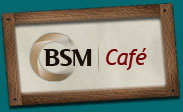 |
 |
|
 |
Take a Systematic Approach to Solve
Your Staff Management Challenges
By Derek A. Preece
BSM Consulting
|
|
 |
|
"If I didn't have to spend so much time babysitting my employees, maybe I could get some work done."
Sound familiar? Ophthalmology managers are responsible for carrying out the objectives of practice owners, and that task is made more difficult when too much time is spent on staff problems. Why is managing employees so frustrating? Part of the reason is that every human is a complex, independent, unpredictable organism that rarely does exactly what we want.
Is there something—anything—managers can do to lessen the need for babysitting staff? I believe there is. After observing management techniques and styles for three decades, and through a lot of trial and error of my own, I believe that a system of management must be applied by managers so we are fair to all employees. By doing so, we allow high performers to develop their talents fully, and we encourage poor performers to find positions that better suit their talents. When we accomplish those two ends, it is much easier to meet the needs and expectations of our practice owners. (Additional staff management tools and resources are available in the BSM Café at www.BSMCafe.com.)
The Five-Step Management System
The five-step system discussed in this article is proven, comprehensive, easy-to-learn and apply, and extremely valuable to both experienced administrators and new supervisors. It requires no special personality or charisma on the part of the manager and, if implemented fully, results in significant and measurable improvements in production, morale, and growth among staff members and managers alike.
|
 |
|

What is the BSM Café?
The BSM Café offers visitors a free "taste" of the vast library of proven practice management tools and resources contained in BSM Connection® for Ophthalmology, a subscription-based online product developed by BSM Consulting. BSM Café visitors have full access to the Café offerings for a month and can learn more about BSM Consulting while discovering the depth and breadth of the valuable resources available to BSM Connection® subscribers.
Take a moment to visit the BSM Café, located at www.bsmcafe.com. We're confident you'll find it worthwhile.
|
|
|
 |
Step 1: Provide the Tools
Management must provide the necessary tools for employees to effectively do their jobs. The tools required may include adequate space, computer equipment, written forms, a telephone, etc. If employees do not have the proper tools, they cannot be held accountable for accomplishing their work. Additionally, managers regularly need to review the effectiveness of these tools and update them over time to ensure ongoing efficiency as the business grows and develops.
Step 2: Provide Training
It is management's responsibility to provide training for employees. Without proper training, employees cannot be held accountable for accomplishing their work in the manner required by the practice. Management needs to make sure that training is given to employees for each of their position's tasks. Training can be internal (on-the-job training from an experienced peer or a direct supervisor) or external (professional enrichment courses or seminars).
Step 3: Help Employees Set Goals
Management has the responsibility to help employees set meaningful goals for improving their work. By setting their own goals, employees are invited to become more intimately acquainted with the position and, hence, more committed to the outcome of the job for which they are responsible. By engaging in the goal-setting process, an employee is given the opportunity to help direct the future of the position and establish a greater sense of job satisfaction. For this reason and others (e.g., team-building, etc.), it is best that employees set their own goals, which management then reviews and approves for appropriateness. If an employee does not focus initially on what the manager deems as a priority issue or on areas perceived as needing improvement, a manager may choose to intervene, asking the employee to work on those specific concerns by adding them to the employee's goals.
Step 4: Become a Resource
Once employees have the tools and training they need and have set goals for improvement, management needs to become a resource to help staff members overcome obstacles or assist when they have reached an impasse. After applying their best efforts, employees need to know that a team structure exists and that the guidance and direction of an experienced manager is readily available when they can make no further progress on their goals. For staff to look to management as a resource for assisting with their goals, managers must be available, approachable, and ready to listen with an open mind. A good manager encourages and supports employees without taking over the responsibility for accomplishing established goals. A manager must resist the temptation to micromanage or assume responsibility belonging to the employee.
Step 5: Hold Employees Accountable
The final step in the management process is to hold employees accountable for progress toward the established and agreed-upon goals. Since goals are often set without full knowledge of all challenges that might occur on the journey toward accomplishing a goal, it is appropriate to measure success by progress made rather than simply by whether or not the goal has been accomplished in the projected time frame. Employees can be held accountable through regular reviews and individual interviews, which are also excellent opportunities to provide feedback: correction when necessary and commendation whenever possible.
Proven System
This proven five-step system of management will help retain valuable employees because they will enjoy the progress they make in accomplishing their goals. Additionally, it will encourage poor-performing staff members to find other employment. This system also will help build teamwork and cohesiveness as employees work to meet the practice and individual goals that are established by your practice-owners.
|
 |
 About the author: Derek Preece is a senior consultant and principal with BSM Consulting, an internationally recognized health care consulting firm headquartered in Incline Village, Nevada and Scottsdale, Arizona. For more information about the author, BSM Consulting, or content/resources discussed in this article, please visit the BSM Café at www.BSMCafe.com.
About the author: Derek Preece is a senior consultant and principal with BSM Consulting, an internationally recognized health care consulting firm headquartered in Incline Village, Nevada and Scottsdale, Arizona. For more information about the author, BSM Consulting, or content/resources discussed in this article, please visit the BSM Café at www.BSMCafe.com.
|
|
 |
 |





 About the author: Derek Preece is a senior consultant and principal with BSM Consulting, an internationally recognized health care consulting firm headquartered in Incline Village, Nevada and Scottsdale, Arizona. For more information about the author, BSM Consulting, or content/resources discussed in this article, please visit the
About the author: Derek Preece is a senior consultant and principal with BSM Consulting, an internationally recognized health care consulting firm headquartered in Incline Village, Nevada and Scottsdale, Arizona. For more information about the author, BSM Consulting, or content/resources discussed in this article, please visit the